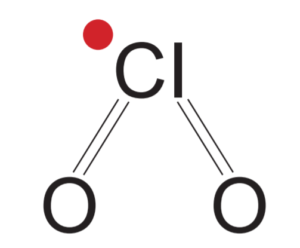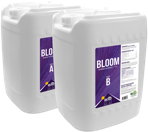Chlorine Dioxide
Share this Post
FOR CANNABIS CULTIVATORS
Cannabis cultivation requires careful planning and strict protocols to avoid crop failure from microbial contamination. Integrated pest management is a concept that includes cultural, mechanical, biological and chemical control methods. These methods are intended to be incorporated at a preventative level to counteract the risk of exposure to pests and diseases and subsequent economic losses.
Chemical control products are available in a wide variety of active ingredients and application methods, inclusive of essential oils, minerals, and synthetic pesticides. These products can prevent and cure pest infestations, fungal diseases, biofilm production, and odor-causing bacteria. The control of biofilm and odor-causing bacteria and sanitation of cultivation rooms and surfaces can be done with a singular chemical product: chlorine dioxide, or ClO2.
WHAT IS CHLORINE DIOXIDE?
Chlorine dioxide (ClO2) is a highly reactive molecule that kills microorganisms. ClO2 is a gas that is also highly soluble in water. Since it can be used as a gas or liquid, this gives it flexibility for sanitizing applications. ClO2 is very small, nearly 50,000 times smaller than a fog droplet. The small size allows it to penetrate and reach microorganisms to sterilize them. ClO2 gets its sterilization power because it is a free radical (Figure 1).

Figure 1. Chlorine dioxide molecule. Chlorine dioxide is a free radical, which makes it highly reactive to control microorganisms in irrigation systems and on other hard surfaces.
A free radical attacks other molecules and steals their electrons (a reaction known as oxidation), causing the other molecules to break down. In other words, ClO2 will attack the surface of a microorganism, causing the organism to break down and die. Compared to other disinfectants, chlorine dioxide has a few advantages.
First, it has a lower oxidation strength than chemicals like ozone or hydrogen peroxide. Chlorine dioxide will be less reactive with compounds like fertilizers, but strong enough to effectively sanitize microbes. Second, it has a higher oxidation capacity. A single molecule of chlorine dioxide can steal up to five electrons, while other disinfectants can only steal two. Therefore, ClO2 can sanitize more efficiently than other chemicals.
Chlorine dioxide can be dispensed as a gas or a liquid. In its gas form, ClO2 can be released slowly or quickly, depending on the desired outcome. When released slowly, the concentration of ClO2 is low and not toxic to humans, plants or animals. This is ideal for routine odor control in grow rooms and curing rooms. When released quickly, the high concentration is ideal for disinfecting and sanitizing a sealed space. This should be only be administered in a sealed room when there are no humans, plants, or animals present. It is important to note that air circulation, exhaust ventilation and UV filters should be turned off when dispensing chlorine dioxide gas. The ClO2 concentration will decrease after a few hours and it will be safe to enter the room.
In its liquid form, chlorine dioxide is an extremely effective disinfectant and sanitizer. This can be used to clean and disinfect equipment such as cutting tools, pots, greenhouse benches and workspaces. Liquid ClO2 is also ideal for use in water reservoirs and irrigation systems to combat the bacteria, fungi, and algae that cause biofilm. Liquid ClO2 is safe to apply at low rates in irrigation systems with every nutrient feed to prevent the build-up of biofilm.
Chlorine dioxide and its primary by-products break down to sodium chloride (also known as table salt). This, along with the ease of use and multifunctionality, makes chlorine dioxide the preferred eco-friendly biocide to use in a Cannabis cultivation facility.

